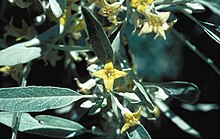Home Away From Home
by Mary
Sanders
Wilderness Volunteers 2018 Intern
The smell of fresh air was the first thing
that hit me getting out of the car. The Weminuche Wilderness, a pristine area
within the Rio Grande National Forest, was the location of what would be my
second Wilderness Volunteer project. Dragging my oversized backpack out of the
car, I was reminded of how differently my life would move, being in the
outdoors.
Though the wilderness is where humans have
survived for the majority of our existence, it seems more like a distant memory
today. Certain cues from our senses can remind us that we have natural
instinct, but in the hustle and bustle of everyday life, it’s often drowned
out.
 |
| Left, plagued trees from the pine beetle. Right, the trailhead of our worksite. |
This Wilderness Volunteer project was a chance
to reconnect. As a society we’ve continued to become more and more separated
from nature as populations fill up urban cities, and technology continues to
advance. Any opportunity to put ourselves back into nature, though seemingly
more foreign, is so important.
Whether camping or backpacking, there is an
increased appreciation for the little things. Our meals were simpler, hygiene a
little more limited, and sleep more challenging. While this may sound negative,
it’s the contrary. The environment was changing the group's mindset,
recalibrating our brains.
It only took a few days to feel a sense of
belonging outside. Under the starry sky, nights became more restful. The
morning routine went with the rise of the sun. The trails, reservoir, wildlife,
river, all familiar, like an old friend. Even the work made more sense. Knowing
how to listen when to take a break, and when to push through under the hot
summer sun.
 |
| Left, our humble tents. Right, taking a break. |
Miles into the backcountry, perched on a rock in the shade, I was taking a break from my hike. It was our rest day, only half way into the project, and already it felt very different being there. My mind wasn’t as reactive to the noises around me, instead I was just able to relax and watch the birds moving through the trees. The wilderness didn’t feel like is was mine, but it also didn’t feel unfamiliar.
With these moments also comes an immense
respect for the state of designated wilderness areas. Immersion into these
areas creates a desire for these lands to say as pristine as they are. There is
such a peacefulness to untouched land. How it flows, and feels completely
interconnected. It’s when humans have stepped in, and unconsciously left scars
and marks, that it’s no longer the same.
 |
| Big Meadows Reservoir, right by our campground. |
By the end of the trip I was somber to be
leaving the mountains. Upon walking into my first gas station after the trip,
feeling the A/C, seeing all the neon packaging, that felt unnatural. It’s after
the removal, that the benefits of being in the outdoors truly reveal itself.
With it also brings appreciation. Appreciation towards your ability to
experience and be in the outdoors. Appreciation towards your ability to truly
enjoy the outdoors. To take part in it.


















































